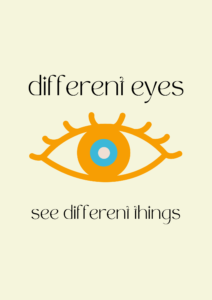
The Evolution of Hybrid Work
As remote work becomes more prevalent, companies are embracing hybrid work models that offer flexibility and autonomy to employees. This shift challenges the conventional notions of work culture, prompting organizations to reassess their values, communication strategies, and inclusivity practices.
Introspection: Understanding the New Normal
Organizations are reflecting on the values that define their culture and how these values can be adapted to accommodate the diverse needs and backgrounds of a remote or hybrid workforce. It’s a time for leaders to question assumptions, challenge norms, and embrace change.
Cultivating a Culture of Diverse Ideas
Remote and hybrid work settings can either amplify or diminish diversity within a team. Leaders must actively seek perspectives from individuals with varied backgrounds, experiences, and ways of thinking. This diversity fosters creativity, innovation, and a broader understanding of the challenges faced by employees.
Inclusive Communication Strategies
Effective communication lies at the heart of any successful organization. In a hybrid work environment, clear and inclusive communication becomes even more vital. Leaders must leverage technology to create open channels for dialogue, ensuring that every voice is heard. Regular check-ins, virtual town halls, and collaborative platforms help bridge the gap between in-office and remote team members.
Breaking Down Barriers
Geographical and cultural differences can create barriers in a hybrid work setting. Organizations committed to building a Culture of Diverse Ideas must actively work towards breaking down these barriers. This may involve investing in cross-cultural training, promoting awareness of different working styles, and fostering a sense of belonging among team members, regardless of their geographical location.
Embracing Change and Adaptability
A successful hybrid work setting requires a culture that embraces change and adaptability. Leaders must communicate a vision that encourages a mindset shift from fixed routines to flexible approaches. This includes redefining success metrics, recognizing and rewarding adaptability, and creating an environment where experimentation is valued.
Exemplifying Culture of Diverse Ideas and Backgrounds
Microsoft has made significant strides towards fostering a culture of inclusivity and diversity across its global workforce. Under the leadership of CEO Satya Nadella, the company has implemented various initiatives aimed at promoting diversity and empowering employees from diverse backgrounds. Microsoft exemplifies a culture that embraces diverse ideas and backgrounds in the following ways:
1. Diverse Leadership Team
Microsoft’s leadership team is notably diverse, with individuals from various ethnicities, genders, and backgrounds holding key executive positions. This diverse leadership team reflects a commitment to inclusivity from the top down, setting the tone for the entire organization.
2. Inclusive Hiring Practices
Microsoft has implemented inclusive hiring practices to attract and retain diverse talent. The company actively recruits from underrepresented groups and emphasizes the importance of diversity in its recruitment processes.
3. Employee Resource Groups
Microsoft supports Employee Resource Groups (ERGs) that provide networking, professional development, and support for employees with shared identities or backgrounds. These groups play a crucial role in fostering a sense of community and belonging within the organization.
4. Diversity Training and Education
Microsoft invests in diversity training and education programs to raise awareness and promote understanding of diverse perspectives among employees. This helps create a more inclusive and respectful work environment.
5. Community Engagement and Philanthropy
Through its philanthropic efforts, Microsoft actively supports initiatives that promote diversity and inclusivity in education, technology, and community development. This demonstrates a commitment to driving positive change outside the workplace.
6. Innovation and Accessibility
Microsoft’s commitment to diversity extends to its product development. The company emphasizes accessibility features in its software and hardware products, ensuring that technology is inclusive and accessible to people of all abilities and backgrounds.
One notable example of Microsoft’s dedication to diversity is with the Autism Hiring Program. Microsoft launched this initiative to recruit individuals on the autism spectrum for full-time positions in software engineering and related roles. The program focuses on leveraging the unique talents and skills of individuals with autism, fostering an environment where neurodiversity is valued and embraced.
Conclusion
Microsoft demonstrates a deep understanding of the benefits of diverse perspectives and actively works to create a workplace where every individual feels valued, respected, and empowered to contribute their best. This commitment not only enriches Microsoft’s organizational culture but also drives innovation and success across the company.
Furthermore, as organizations navigate the complexities of hybrid work, cultivating a culture of diverse ideas and backgrounds should be prioritized. Through introspection, inclusive communication, breaking down barriers, and embracing adaptability, organizations can shape a work culture that thrives in a variety of work environments. The journey towards a more flexible and inclusive future of work begins with a deep dive into the core values that define organizational culture.
Watch the video and hear about some easy-to-initiate ways to embrace a culture of diverse ideas and backgrounds.

